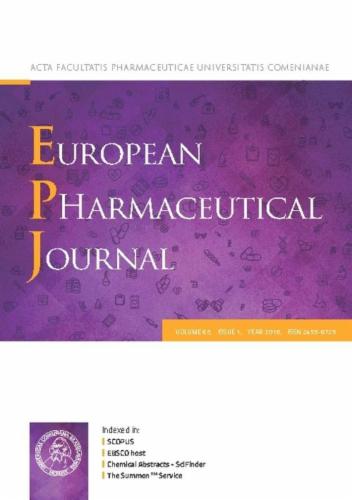静电排斥-反相色谱法在复杂多肽混合物中分离性能的比较:以利拉鲁肽为例。
IF 4.7
3区 医学
Q1 PHARMACOLOGY & PHARMACY
引用次数: 0
摘要
在过去的几年里,治疗肽的兴趣呈指数级增长,特别是那些与糖尿病治疗和体重控制有关的肽,如胰高血糖素样肽1 (GLP-1)激动剂。然而,它们的分子复杂性是具有挑战性的,需要开发定制的色谱分析工具来有效地评估它们的相关物质谱。在本文中,我们对静电排斥反相(ERRP)色谱的两种正交方法进行了比较,即静态ERRP和动态ERRP,目的是评估它们在分辨率方面的能力。这两种方法都应用于GLP-1衍生物利拉鲁肽作为案例研究,将注意力集中在与肽产物相关的经典杂质上,如外显子和内端/eso杂质。本文章由计算机程序翻译,如有差异,请以英文原文为准。

Comparing the performance of electrostatic repulsion-reversed phase chromatography approaches in the resolution of complex peptide mixture: Liraglutide as case study
Therapeutic peptides showed an exponentially growth in interest over the course of the last years, in particular those related to the treatment of diabetes and weight control, such as the Glucagon Like Peptide 1 (GLP-1) agonist. Their molecular complexity is however challenging and requires the development of tailored chromatographic analytical tools to efficiently assess their related substance profile. In the present paper, we performed the comparison of two orthogonal approaches related to Electrostatic Repulsion-Reversed Phase (ERRP) chromatography, namely the static ERRP and dynamic ERRP, with the aim to assess their capabilities in terms of resolution. Both the approaches were applied to the GLP-1 derivative Liraglutide as case study, focusing the attention on classical impurities associated with peptide products, such as epimers and endo/eso impurities.
求助全文
通过发布文献求助,成功后即可免费获取论文全文。
去求助
来源期刊
CiteScore
9.60
自引率
2.20%
发文量
248
审稿时长
50 days
期刊介绍:
The journal publishes research articles, review articles and scientific commentaries on all aspects of the pharmaceutical sciences with emphasis on conceptual novelty and scientific quality. The Editors welcome articles in this multidisciplinary field, with a focus on topics relevant for drug discovery and development.
More specifically, the Journal publishes reports on medicinal chemistry, pharmacology, drug absorption and metabolism, pharmacokinetics and pharmacodynamics, pharmaceutical and biomedical analysis, drug delivery (including gene delivery), drug targeting, pharmaceutical technology, pharmaceutical biotechnology and clinical drug evaluation. The journal will typically not give priority to manuscripts focusing primarily on organic synthesis, natural products, adaptation of analytical approaches, or discussions pertaining to drug policy making.
Scientific commentaries and review articles are generally by invitation only or by consent of the Editors. Proceedings of scientific meetings may be published as special issues or supplements to the Journal.

 求助内容:
求助内容: 应助结果提醒方式:
应助结果提醒方式:


